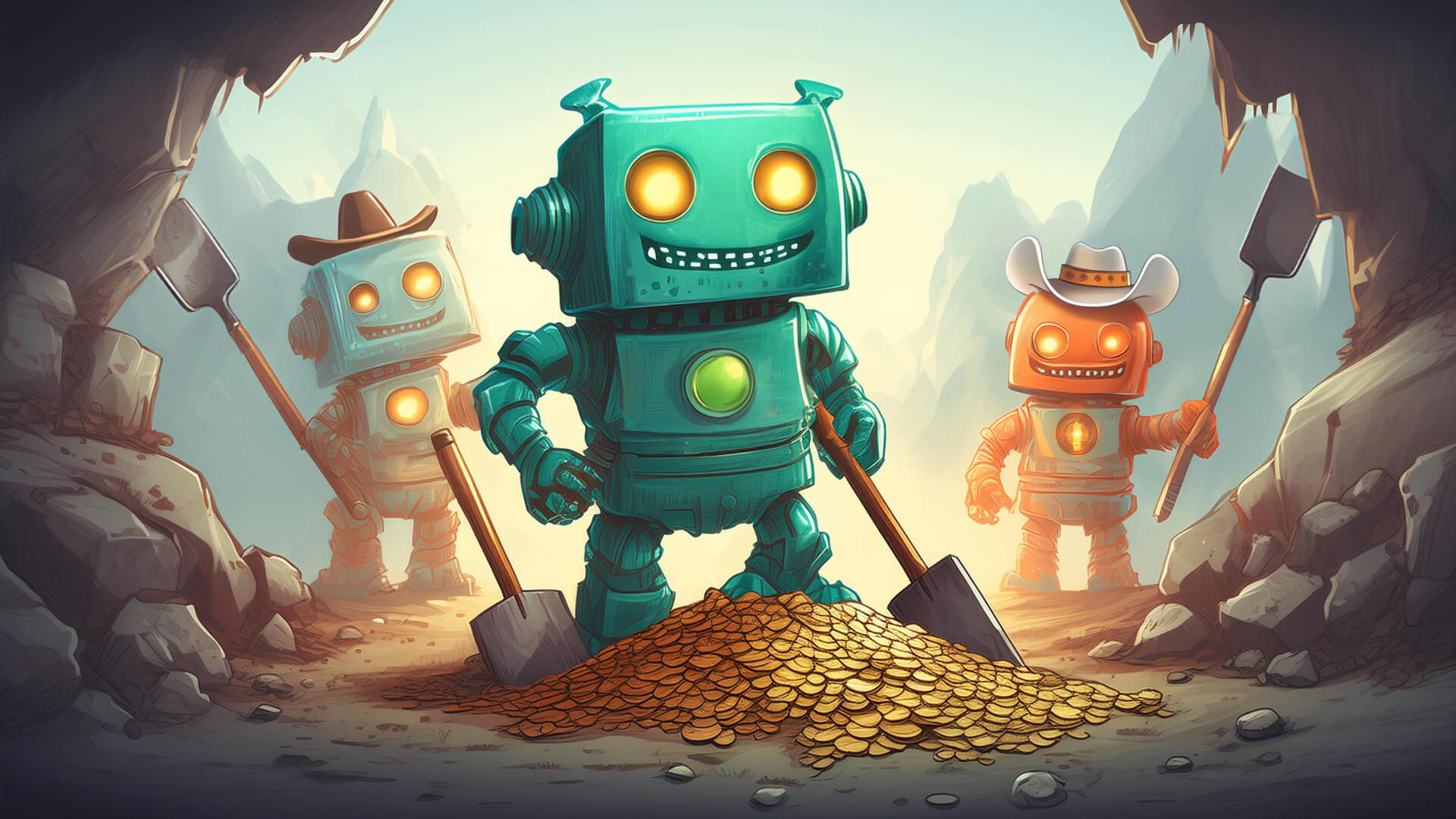
To Dig Or Not To Dig? The AI Question
Breaking Down Current General Sentiment

Written by Mattske // June 26, 2024 (Read Time: 8 Minutes)
SUMMARY
There is an old expression that one should “sell shovels during a gold rush,” and in terms of AI, most people agree that Nvidia is in the shovel business. In order for gold to be valuable, it has to be put to use somehow. Furthermore in the context of gold’s value, it can be calculated more easily than the value of artificial intelligence software (if that is truly the “gold” here) because it is not finite in the same way as the mineral gold. Hardware is finite, though, so either Nvidia is in the shovel business, in which case it should be dwarfed in value by the actual “gold” in this industry, or Nvidia is in some other business besides selling “shovels” for mining the power of AI.
The Alchemist's scheme
For those people who are unfamiliar with the concept referenced in the headline of this post, there is an old saying about booms (or bubbles) which is said in different ways but essentially suggests that “during a gold rush, sell shovels.” What it means is that finding gold is hit or miss, difficult to predict, and relies on some measure of luck in terms of a metaphor for business operations. On the other hand, if a lot of people will be digging for gold, the people who sell the tools for those risk-takers are more likely to actually make money because they will have a wide distribution for their product even though they aren’t locked in to any of the would-be entrepreneurs’ success. In terms of artificial intelligence as a bubble, or boom cycle, many people have identified certain companies or products as the “shovels” of this movement.

But when you really think about it, what is the gold in this scenario? Is the “gold” of the AI industry AI itself, such as the gold in the gold rush? Unfortunately, it’s not that easy. Gold gets mined, then turned into jewelry or sold itself as an investment vehicle. However, it is the rarity of the material which gives it any version of inherent value, even from speculators. There is not yet a good indicator of the limitations of quantity or volume when it comes to AI that is useful, and beneficial to those who utilize it. From that perspective, I believe use-cases with specific AI could be best described as the “gold” here. Therefore, what are the shovels in this case?
Most people describe the shovels in AI to be the computer chips produced by companies like Nvidia, which is why their valuation has skyrocketed over the last several years as this boom cycle goes on. However, something about that doesn’t totally make sense from an economic standpoint, because it may be true that the shovels made a lot of money during the gold rush, but the shovels were not the highest valued thing. In fact, if you could have found a way to mine gold without purchasing shovels, that would have been an even more attractive business in that you would be acquiring the most valued thing without excessive cost.
The demand for a never-ending supply
Therefore, if you still believe that Nvidia and their computer chip partners are the “shovels” (Futurism, 8/25/23) which are meant to mine the value of the gold which are AI solutions that actually have a use-case in society, you’d have to ask yourself how much more valuable the eventual useful AI market will be. It would logically be more than the shovel industry, which – if it followed the 49er pathway – would eventually crash in terms of value as the value of that which was mined (the gold) began to increase as it was used in real world applications. The shovels are a speculator’s market. The gold was where the rubber met the road. Sure shovels still get sold in terms of other applications, but once a lot of gold was found or mined, the value of the shovel itself just simply became a component part (commodity) to the more rare commodity or novel value of the gold itself. The output that the gold is used for of course is the absolute value of the entire operation in a traditional sense.
Read more: To Dig Or Not To Dig? The AI Question
So either you think that the useful AI industry is worth something like $10 Trillion or $20 Trillion dollars, dwarfing Nvidia which has inflated to over $3 Trillion on the basis that it is somehow the most valuable part of the ecosystem. Either that’s true only until a software solution which puts those chips into practice eclipses them, or the value of Nvidia and other companies associated with them are wildly overstated right now. The metaphor (or allegory if you take it as far as I did) of the gold rush, when layered on top of the rush to find AI breaks down when you realize that gold is an actual mineral that exists in a finite quantity out in the world. Whereas artificial intelligence is a concept that can be brought to bear in an endless supply.
Right now the broken mentality seems to be that because there is a philosophical limitlessness to the production of artificial intelligence, that means the valuation of companies in that business also have no limitations. That is, for lack of a better word – wrong. There is a limitation on the amount of AI that can be generated and it currently depends on human beings, and the day that it no longer requires a human being to operate the functionality will either come to a theoretical end, or human beings will have come to that same theoretical end in terms of our mutual relationship with artificial intelligence.

The articles in this post were from the year 2023 when this concept of an AI gold rush really began gaining steam. Some people still talk about it, but those who have forgotten may have never understood the limitation of this metaphor, or the lie.
What has happened is that the “gold” of the AI rush has become confused for the last year. Instead of the goal being use-cases where the technology is actually providing cost-benefit and advancement in human potential while generating more profitability in its application, the only place that has actually generated any monetary value has been in the speculation of the industry itself. That would be like the gold rush being worth $1 Trillion while speculation about what will come of the gold rush being worth $100 Trillion. A similar phenomenon occurred during the speculation surrounding the mortgage crisis before it collapsed. The real estate market crashed massively after decades of being propped up and inflated by bad mortgages (fraud) in a way that took several decades to recover from – and some people never recovered from it. The AI boom should bust in a much shorter period of time given the fact it requires a lot less construction, and is fueled by speculation that is – ironically – being fueled in many ways by AI models themselves.
How much would gold say it's worth?
That is another novelty in this scenario which the gold rush could not have caused. Gold itself cannot speculate, as it is an inanimate object. However, AI models in the hands of money managers and stockbrokers et al will all likely conclude the same thing, which is that AI is increasing in value and will continue to do so. That feedback loop is spurred on by those who are already invested in the technology as well. But, what I found in “chatting” with some of the AI models is that the conversational ones used by retail investors are being programmed and trained by users themselves. It only took a little bit of argument to have one of these models predict for me a date by which Nvidia would be bankrupted, and it was suggested that Apple would be the company responsible for the demise of Nvidia by the year 2030. I would not put much stock (pun intended) in this analysis, but it was produced due to my insistence on it with repeated prompts.

You can’t do that to gold.
You can’t ask gold to multiply. You can’t demand that gold give you a higher valuation for itself on the open market. You can’t ask gold what it thinks of anything.
In conclusion, instead of thinking of Nvidia or their ilk like shovels, perhaps they are more like metal detectors being used by vacationers on a strange beach, looking for old coins or forgotten gold watches – the existing products of human enterprise which have been left behind – and the real gold of AI will be found in other pursuits.
